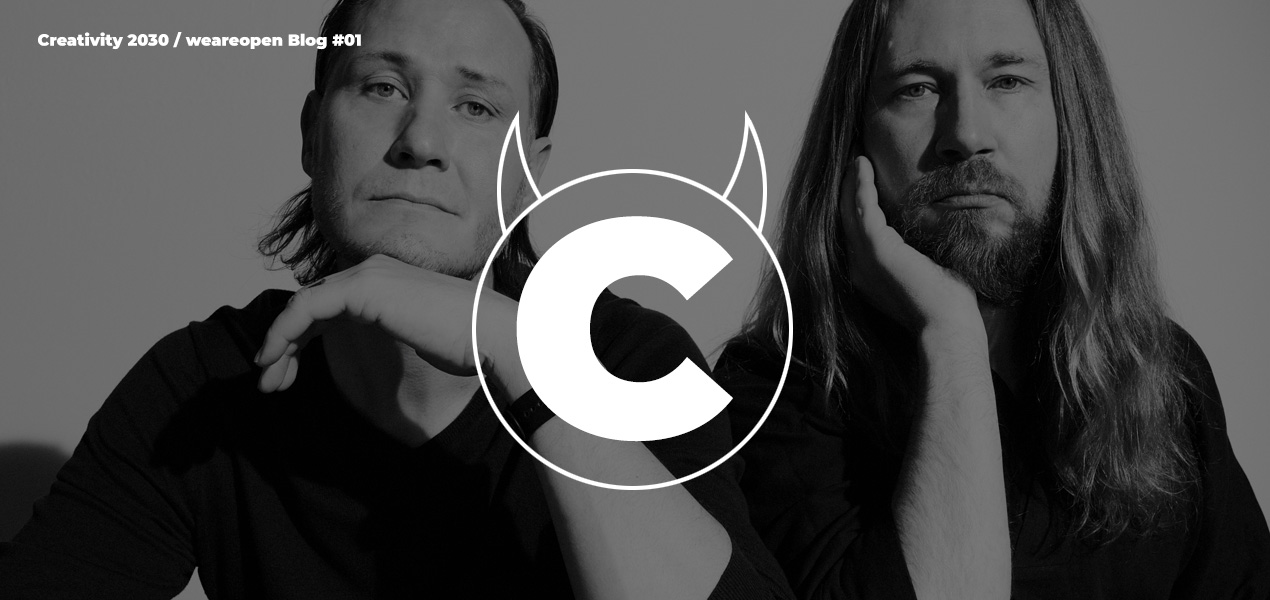The C-word is a bit like love, impossible to define, yet, in the legendary words of a Supreme Court justice, we “know it when we see it.”
The C-word is an odd duck in business. It can’t be crammed into an Excel sheet, contained in a quarterly report, or justified by data. That’s enough to scare off most C-suite executives – to their and their company’s detriment, as the C-word also happens to be the most powerful driver of business transformation. This text is written to move companies from confusion and fear to understanding and loving creativity.
It’s also written while chewing, over a series of zoom lunches with Sanna Laakkio, the executive director of the Finnish Marketing Association. We didn’t just share virtual meals, we shared a frustration: we honestly could not understand how creativity still is grossly undervalued in most companies. Our search for answers lead us on a deep dive into what and how we are creative, from neuroscience to Monty Python.
First, a clarification. By ‘creativity’ we don’t mean artists or say, people with the title ‘creative’ in advertising agencies. We mean humanity’s innate gift for creative problem solving, a skill each and everyone of us possesses. We mean the creative process: one that starts from intuition, connects the seemingly unrelated, and takes us somewhere new and meaningful. We mean the openness required to head there, even if we don’t quite know where ‘there’ is and what it takes to get there.
And all that is needed now more than ever. There’s way too much to fix in the world to ignore our best shot at fixing them. The challenges humanity (and business) face in the all-too-near future can’t be solved in silos through incremental change. They require collective leaps, not competition. That’s where our superpower, creative problem solving, comes in. It’s a uniquely amazing toolbox, method, and strategy all rolled in one. It opens us up to alternative realities and business-as-unusual, shows us how to do things more sustainably, more humanely – and more delightfully. (And no, hitting your ESG goals is not even the start of it, it’s the cost of entry for doing business.)
Yet, most people and most companies have no idea what to do with creativity, how to harness it, how to let it free. So let’s start from hard core neuroscience: the single factor that separates more and less creative brains is the openness to new experiences and ways of doing things. This openness to new is also the key to building a post-pandemic work culture, one that works better for us all, bottom line included. The winners and losers of the next few years and decades will fall into two camps: those who understand how to harness the C-word and build a culture of creativity, and those who don’t.
What if the most rational strategy boils down to embracing creativity?
Leaving the safety of business-as-usual might seem radical, even scary. But why aren’t you scared of your current way of doing business? What if our current quarterly growth objectives, budget allocations and performance metrics steer us towards irrelevance? Why aren’t we more concerned that current corporate culture makes us sick? And what if the most rational strategy for both companies and countries boils down to embracing creativity, and an openness to constantly question how we go about building the future? The biggest obstacle for companies daring to harness the C-word is holding on to outdated metrics. But if current business practices, operating systems, organizational structures, funding environments and success metrics aren’t optimized for a culture of creativity (spoiler alert: they are not) – let’s use the C-word to come up with new, better and more relevant ones.
Finally, could we not think even bigger? Why couldn’t the C-word become the competitive edge of Finland, the country, following the lead of Bhutan’s Gross Happiness Index that fueled the wellbeing of both its citizens and its business? Could Finland become famous for our Gross Creativity Index? If boardrooms, investors, service providers, politicians and citizens all harnessed creativity as the engine of our success, if a culture of creativity was the cornerstone of both the corporate world and civil society, what kind of a future could we build?
This thinking got our whole Zoom Lunch Club excited. So we agreed to spend this year bringing forth different angles towards what this change – let’s call it Creative Transformation – will require. True to our name, we are fans of open dialogue. So whether you are nodding your head vigorously or think we are out of our minds, whether you think we can never afford it or that we can’t afford not to, this is an open invitation to change things together, for good.
This post by We Are Open and more for Creativity 2030 initiative here; https://www.mrktng.fi/luovuus/

No Comments.